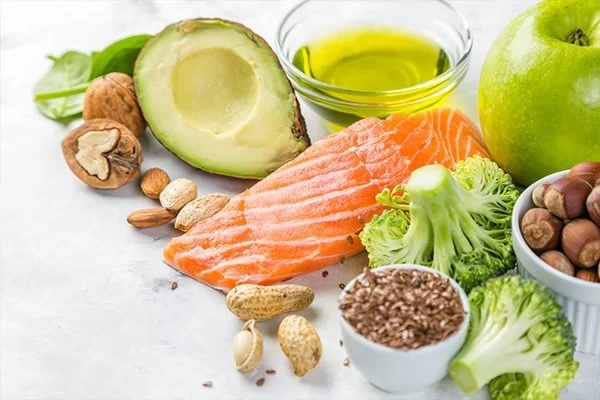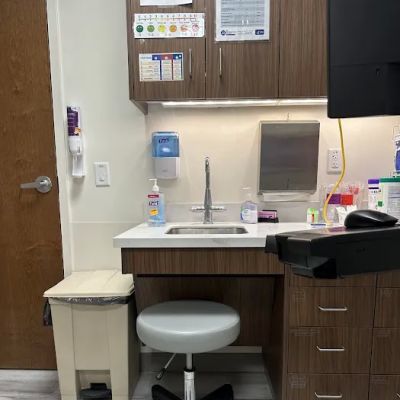Understanding Cholesterol and Its Impact on Heart Disease
Cholesterol is often seen as a culprit when it comes to heart disease, but many of us don't fully understand how it affects our health. Personally, I used to think cholesterol was only a problem for people with poor diets or older adults. But as I started learning more about it, I realized that anyone can be at risk for high cholesterol, regardless of age or lifestyle. The truth is, cholesterol is a type of fat that circulates in the blood, and our bodies need it for various essential functions. However, when cholesterol levels get too high, it can lead to a buildup of plaque in the arteries, increasing the risk of heart disease, heart attacks, and strokes.

Why Lowering Cholesterol Matters
Many people don’t realize that high cholesterol is a “silent” problem—there are often no obvious symptoms until a serious issue arises. That’s why knowing how to lower cholesterol before it becomes a problem is so important. By taking steps to lower our cholesterol, we reduce the buildup of plaque in our arteries, which helps maintain healthy blood flow and lowers the risk of heart disease. The good news is that there are several ways we can manage our cholesterol levels naturally.
Atlanta Heart Specialists
atlanta heart specialists
4375 Johns Creek Pkwy #350, Suwanee, GA 30024, USA

1. Eat Cholesterol-Lowering Foods
One of the most effective ways to manage cholesterol is by making changes to your diet. The foods we eat play a significant role in our cholesterol levels. In my own journey to lower my cholesterol, I focused on incorporating more heart-healthy foods into my meals. These foods are rich in fiber, healthy fats, and essential nutrients that help reduce cholesterol levels.
Foods like oats, barley, and legumes are high in soluble fiber, which binds to cholesterol in the digestive system and helps remove it from the body. I also started eating more fruits and vegetables, which provide antioxidants that support overall heart health. Healthy fats, such as those found in avocados, olive oil, and fatty fish like salmon, are also essential for managing cholesterol. These fats help raise good cholesterol (HDL) levels and lower bad cholesterol (LDL).
2. Increase Physical Activity
Regular exercise is another key factor in lowering cholesterol. It was difficult for me to find the motivation to get moving at first, but once I started exercising consistently, I noticed a significant improvement in my energy levels and overall well-being. Physical activity helps boost HDL cholesterol while reducing LDL cholesterol and triglycerides.
Even simple activities like walking, swimming, or cycling can be incredibly effective. In fact, I found that a daily 30-minute walk helped me lower my cholesterol levels significantly. If you’re just starting out, you don’t need to push yourself too hard—gradually increasing your activity level can lead to long-term success.
3. Limit Unhealthy Fats
One of the most important changes I made was reducing my intake of unhealthy fats, especially trans fats and saturated fats. These fats are known to raise LDL cholesterol and increase the risk of heart disease. Trans fats are found in many processed and packaged foods, such as baked goods, snacks, and margarine. Saturated fats are commonly found in red meat, full-fat dairy products, and fried foods.
By cutting back on these types of fats, I was able to make a noticeable difference in my cholesterol levels. Instead of fatty cuts of meat, I started incorporating lean proteins like chicken, turkey, and plant-based options like tofu. I also switched to low-fat or fat-free dairy products to reduce my intake of saturated fats. It's all about making small, sustainable changes that support long-term health.
4. Manage Stress Effectively
Stress is something that affects many of us on a daily basis. In my case, stress seemed to sneak up on me, especially during busy work periods. However, I learned that managing stress is crucial for keeping cholesterol levels in check. Chronic stress can lead to an increase in unhealthy behaviors such as overeating, smoking, or drinking alcohol—habits that can negatively impact heart health.
To manage my stress, I started incorporating relaxation techniques into my daily routine. Meditation, yoga, and deep breathing exercises helped me stay calm and centered. Even taking short breaks throughout the day to go for a walk or simply relax made a big difference. Stress management is an essential aspect of heart health, and by finding ways to reduce stress, I’ve been able to keep my cholesterol in a healthier range.
5. Quit Smoking
One of the best decisions I made for my heart health was quitting smoking. Smoking not only damages the lungs but also lowers HDL cholesterol levels and increases LDL cholesterol. It also raises blood pressure and increases the risk of heart disease. If you're a smoker, quitting can have an immediate positive effect on your cholesterol and overall health.
Quitting wasn’t easy, but with support from family, friends, and healthcare professionals, I was able to break the habit. If you're thinking about quitting, there are plenty of resources available to help you, including smoking cessation programs and medications.
Additional Lifestyle Changes for Better Heart Health
Along with the strategies mentioned above, there are a few other lifestyle changes I’ve made that have helped me improve my heart health. These include getting enough sleep, staying hydrated, and maintaining a healthy weight. Sleep plays a vital role in regulating cholesterol levels, and dehydration can also contribute to poor cardiovascular health.
Additionally, I began paying more attention to my overall well-being. Regular check-ups with my doctor and blood tests helped me keep track of my cholesterol levels and adjust my approach when needed. It’s important to stay proactive and stay on top of your health to prevent heart disease.
Final Thoughts on Lowering Cholesterol and Reducing Heart Disease Risk
As I reflect on my journey to lower my cholesterol, I’m proud of the changes I’ve made and the improvements I’ve seen in my overall health. It’s not always easy, but by making small, sustainable changes to my diet, exercise routine, and lifestyle, I’ve been able to reduce my risk of heart disease and improve my quality of life. It’s never too late to start making healthier choices, and even small steps can have a big impact on your heart health.
Remember, taking control of your cholesterol and heart health is a journey, and you don’t have to do it alone. Seeking advice from healthcare professionals and finding a support system can make all the difference. Together, we can take charge of our health and work towards a healthier future.






















Deborah Heart and Lung Center
deborah heart and lung center
200 Trenton Rd, Browns Mills, NJ 08015, USA